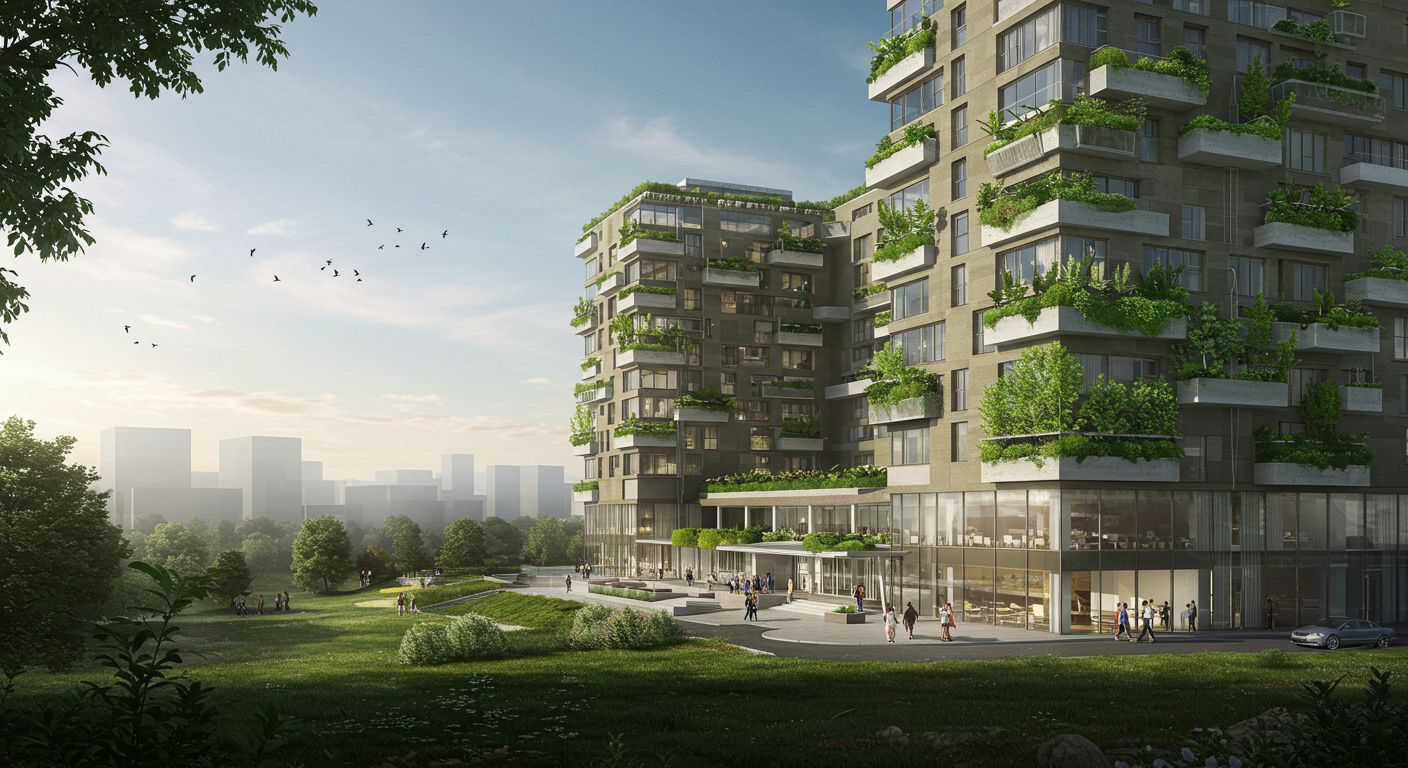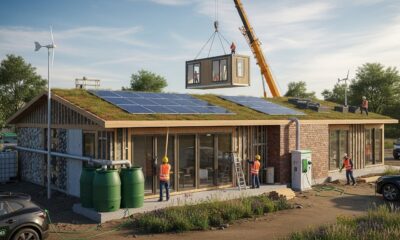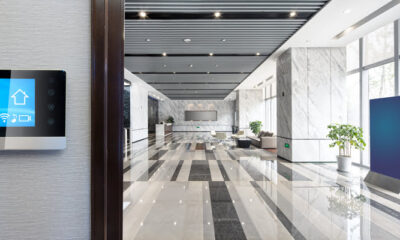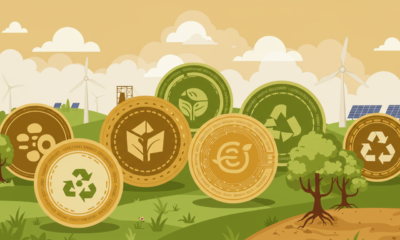

Environment
Eco-Friendly Sustainable Building Materials to Consider
There are a lot of things that you can do if you want to live a greener life. This includes having greener buildings.
This means that more developers are turning toward sustainable practices. Green buildings can reduce CO₂ emissions by up to 35%, helping to address rising energy use and pollution in urban areas. The benefits aren’t just limited to long-term performance—they also support public efforts to combat climate change.
Many people are relying more heavily on using materials that support long-term durability and reduce harm to the environment. Many are moving away from standard cement and plastic-heavy products in favor of options that are less damaging to produce. You can respond to this shift by choosing materials that align with low-emission goals and support healthier spaces for those who live or work in them.
Weather patterns and local moisture levels often shape what materials work best. You will need to consider how walls, roofs, and structural elements respond to rainfall, dampness, and temperature swings. Materials like reclaimed wood, sheep’s wool insulation, and fly ash blends can perform well in damp climates when installed and maintained properly.
Another factor shaping the demand for greener construction is cost over time. You can often reduce long-term repair needs, energy use, and waste by selecting materials that are better suited to your region. While some options may cost more at the start, they often provide lasting value through improved comfort and reduced upkeep.
One survey showed a noticeable shift in public interest: in 2021, 28% of respondents said they were interested in green buildings. That number jumped to 42% when people were asked about future plans. The shift suggests growing public support for choices that consider both health and environmental outcomes.
A survey from the Green Building Council reports that projects certified by LEED standards have already prevented about 120 million metric tons of carbon dioxide from entering the atmosphere. These types of efforts reflect what’s possible when individuals, developers, and suppliers come together with shared goals.
“The impact of our community extends beyond buildings,” says Peter Templeton, president and CEO for U.S. Green Building Council. “Our global community has shaped policy, shifted markets toward sustainable and healthy materials, inspired generations of professionals, and proven that the built environment can be a leading contributor to a better future for all.”
The World Green Building Council reports that the number of green building projects is expected to increase around the rest of the world as well.
“As the world’s largest provider of building technologies, we’ve seen the shift toward more efficient, sustainable buildings,” says Chris Nelson, President, Commercial HVAC for Carrier, premier sponsor of the study. “The fact is, green buildings provide a triple win – delivering measurable benefits for building owners, occupants and the public from reduced operating costs, improved indoor air quality and reduced energy consumption. The trends uncovered in this report reflect what we’re seeing in our business – building green is good for the public health, the environment, and the bottom line.”
Suppliers like Buildstore offer tools, materials, and guidance for builders looking to prioritize sustainable options. These include access to hempcrete, recycled steel, wool insulation, and glazing solutions tailored for damp or variable climates.
As global environmental concerns continue to rise, developers and consumers worldwide are increasingly looking to integrate eco-friendly materials into their construction projects. Sustainable building materials not only reduce environmental impact but also improve energy use, indoor air quality, and often last longer than conventional ones.
In this article, we will explore some of the leading green alternatives—ranging from concrete substitutes to recycled and high-performance materials—alongside their suitability for various climates.
Concrete Alternatives
#1: Ashcrete – Ashcrete is made using fly ash, a byproduct of coal combustion, combined with lime and water to form a strong and durable concrete alternative. Roughly 97% of it comes from recycled sources. It emits far less carbon than traditional Portland cement. In areas with high moisture, ashcrete holds up well due to its resistance to freeze-thaw cycles and sulfate attack.
#2: Hempcrete – Hempcrete is a lightweight mix of hemp fibers and lime. It’s breathable and has excellent thermal properties. Over time, it absorbs more carbon dioxide than it releases. Humid climates benefit from its moisture-regulating qualities, but since it’s not load-bearing, it requires a structural frame.
#3: Timbercrete – This material combines sawdust with cement to form lightweight blocks. It reuses waste material and performs better than concrete in terms of insulation. It’s especially useful in cooler climates, though it requires moisture protection in rainy areas.
#4: Sandcrete – Sandcrete includes sand, cement, and water and is commonly used for non-load-bearing walls. It lacks insulation and absorbs moisture easily, so it’s better suited for indoor use unless treated.
#5: Grasscrete – Made of rock, water, and turf, grasscrete has open spaces for grass growth, which helps with water drainage. It reduces runoff and supports urban flood control systems, making it practical for paving surfaces like driveways and parking areas.
Natural Materials
#1: Bamboo – Bamboo grows quickly and is strong, but it doesn’t thrive in all regions and usually must be imported. It also requires treatment to resist mold and insects.
#2: Straw Bales – These are made from agricultural byproducts and offer great insulation. However, they need protection from damp conditions and work best when kept dry and well-rendered.
#3: Rammed Earth – This traditional technique uses compacted soil to build sturdy walls. It holds heat well and reduces the need for artificial heating or cooling. Still, walls must be sealed and kept dry to prevent erosion.
#4: Mudbrick – Mudbricks are affordable and regulate heat effectively, but like rammed earth, they need sealing against heavy rain.
#5: Wood – Sustainably harvested timber traps carbon and is suitable for various uses, including structural framing and interiors. It performs well when treated for water resistance and insect protection.
Recycled Materials
#1: Recycled Steel – Steel can be reused repeatedly without weakening. Using recycled steel cuts energy use by up to 75% compared to new steel. It performs reliably in all climates but may require design solutions to reduce thermal bridging.
#2: Recycled Glass – Glass can be repurposed into tiles, countertops, and insulation. When sourced locally, it reduces emissions from transport and offers strong durability.
#3: Recycled Plastics – These are used in roofing and insulation. They’re resistant to moisture, though their thermal performance varies. Some applications need fire-proofing treatments.
#4: Recycled Rubber and Fly Ash – Rubber provides slip-resistant paving, especially useful outdoors. Fly ash is used to replace cement and resists moisture and chemical erosion.
#5: Reclaimed Wood – Salvaged from old buildings, reclaimed wood adds character and avoids cutting new trees. It’s usually well-seasoned and holds up in various climates if properly inspected.
Other Sustainable Building Materials
#1: High-Performance Windows and Smart Glass – Windows with low U-values (like 0.8 W/m²K) reduce winter heat loss. Smart glass adjusts light and temperature, helping cut down on energy use.
#2: Cork – This renewable material is harvested without harming the tree. It insulates well and resists mildew, making it suitable for indoor spaces.
#3: Terrazzo – Created using marble and glass chips in a cement base, terrazzo is durable and long-lasting. It works well indoors but can be slippery outside unless treated.
#4: Sheep’s Wool Insulation – Wool insulates even when damp and balances humidity in the home. It’s non-toxic, flame resistant, and compostable, which makes it suitable for damp or rainy climates.
#5: Self-Healing Materials – These emerging materials include concrete that seals its own cracks using bacteria or microcapsules. They’re especially suited for foundations and cold areas where water freezing causes stress.
Choosing the right materials can shape the long-term impact of any building project. When you select options that are safer, more durable, and lower in emissions, you help reduce harm to both people and the environment. Materials such as hempcrete, recycled steel, sheep’s wool, and smart glass provide practical ways to address moisture, temperature, and energy use without relying on harmful production methods.
You can make meaningful progress by focusing on what works best in your specific climate and building type. Whether the goal is to lower energy bills, reduce waste, or support healthier living conditions, these choices can lead to better outcomes over time. You will also be contributing to a broader effort to rethink how buildings are designed and built for long-term well-being.


 Environment10 months ago
Environment10 months agoAre Polymer Banknotes: an Eco-Friendly Trend or a Groundswell?

 Environment11 months ago
Environment11 months agoEco-Friendly Home Improvements: Top 7 Upgrades for 2025

 Features9 months ago
Features9 months agoEco-Friendly Cryptocurrencies: Sustainable Investment Choices

 Features10 months ago
Features10 months agoEco-Friendly Crypto Traders Must Find the Right Exchange




























